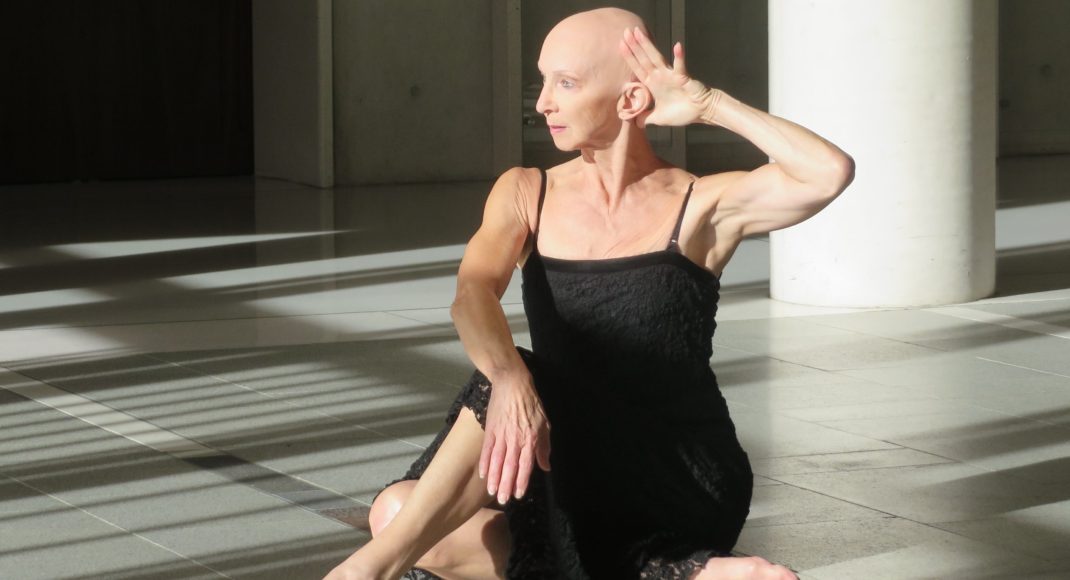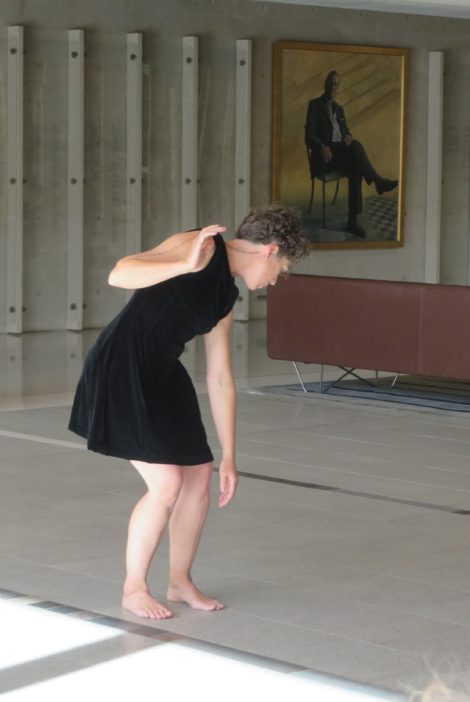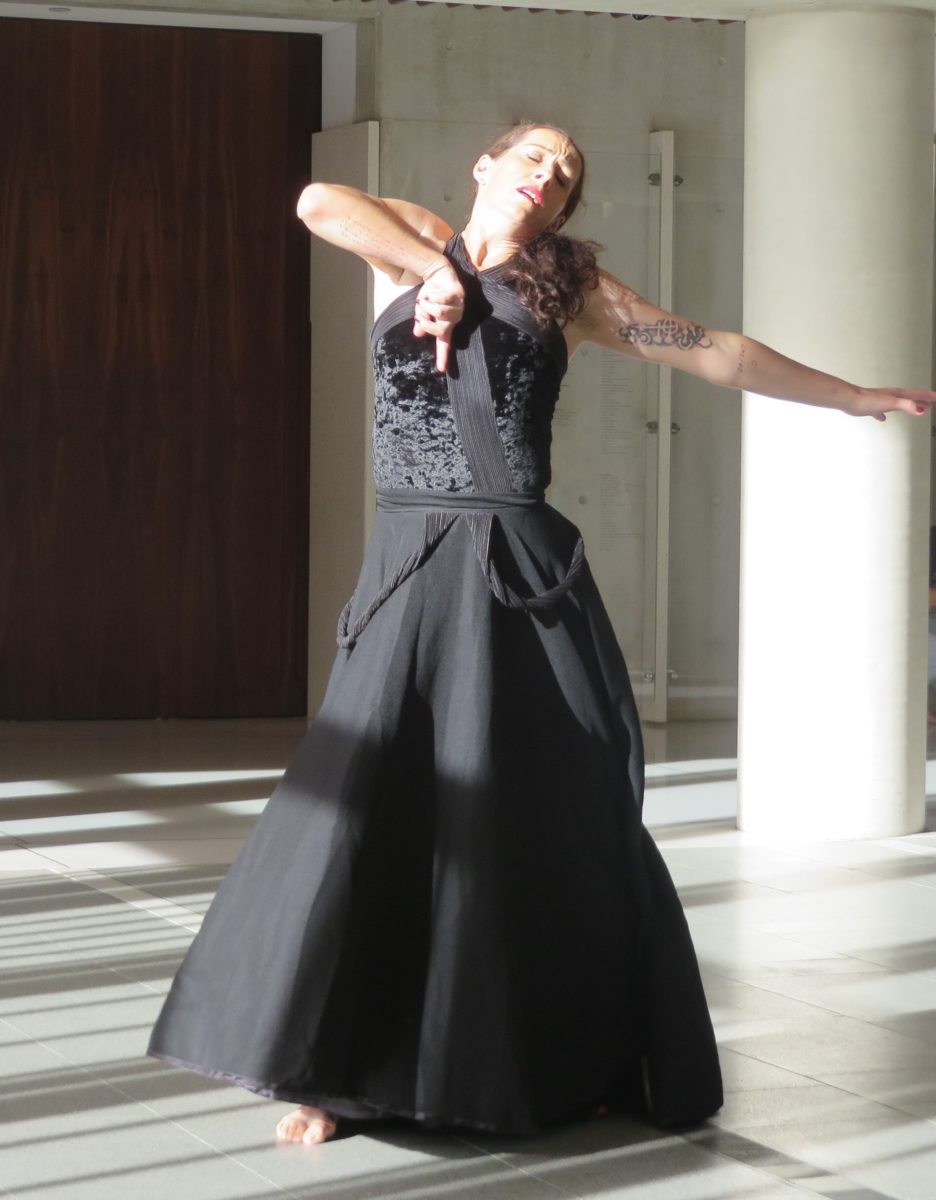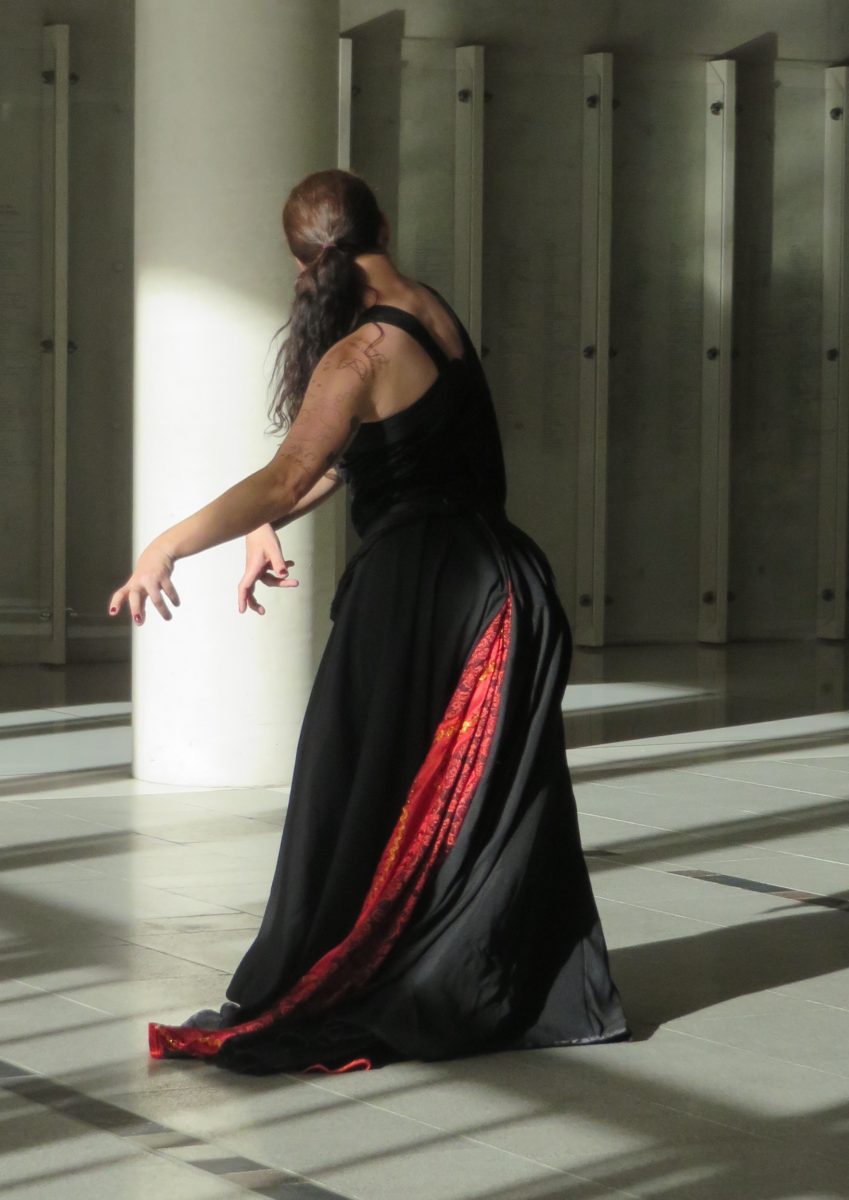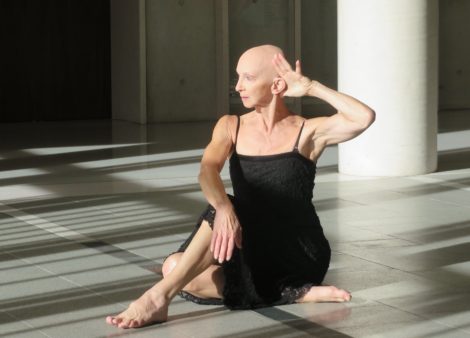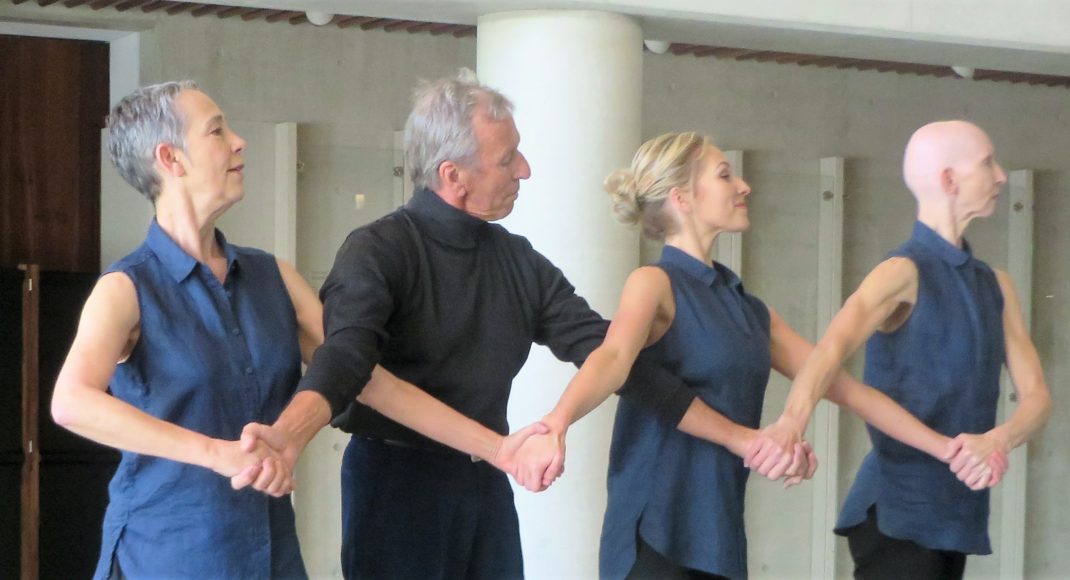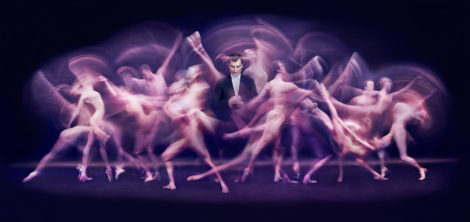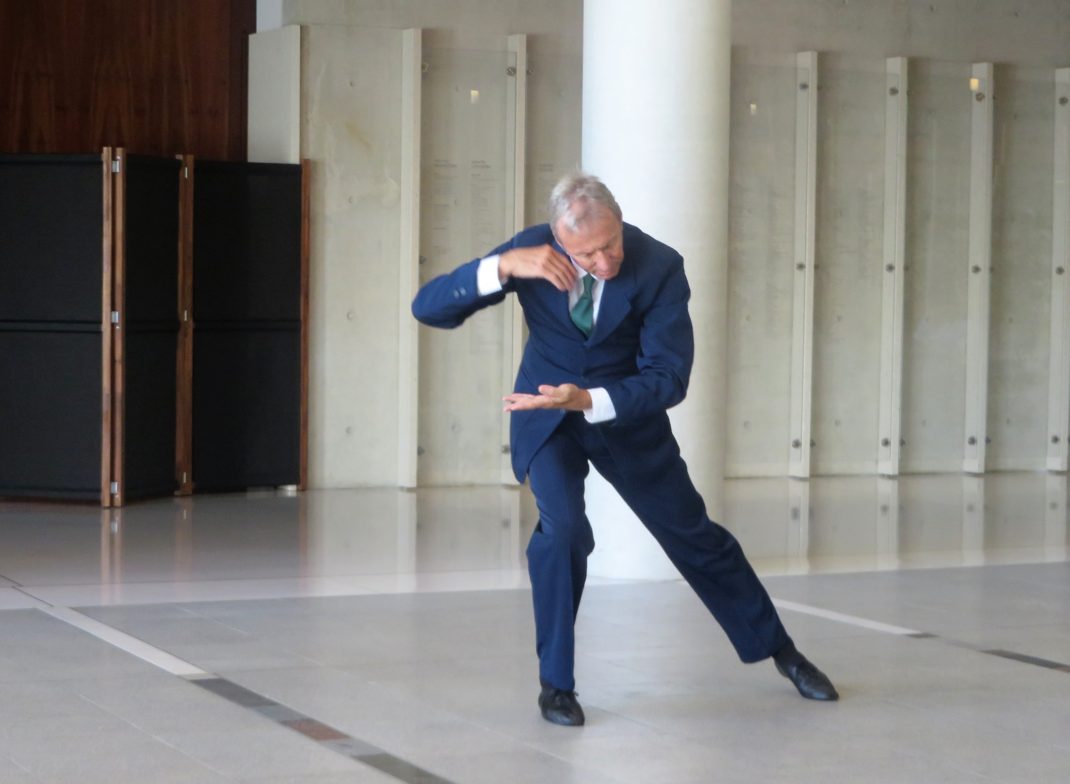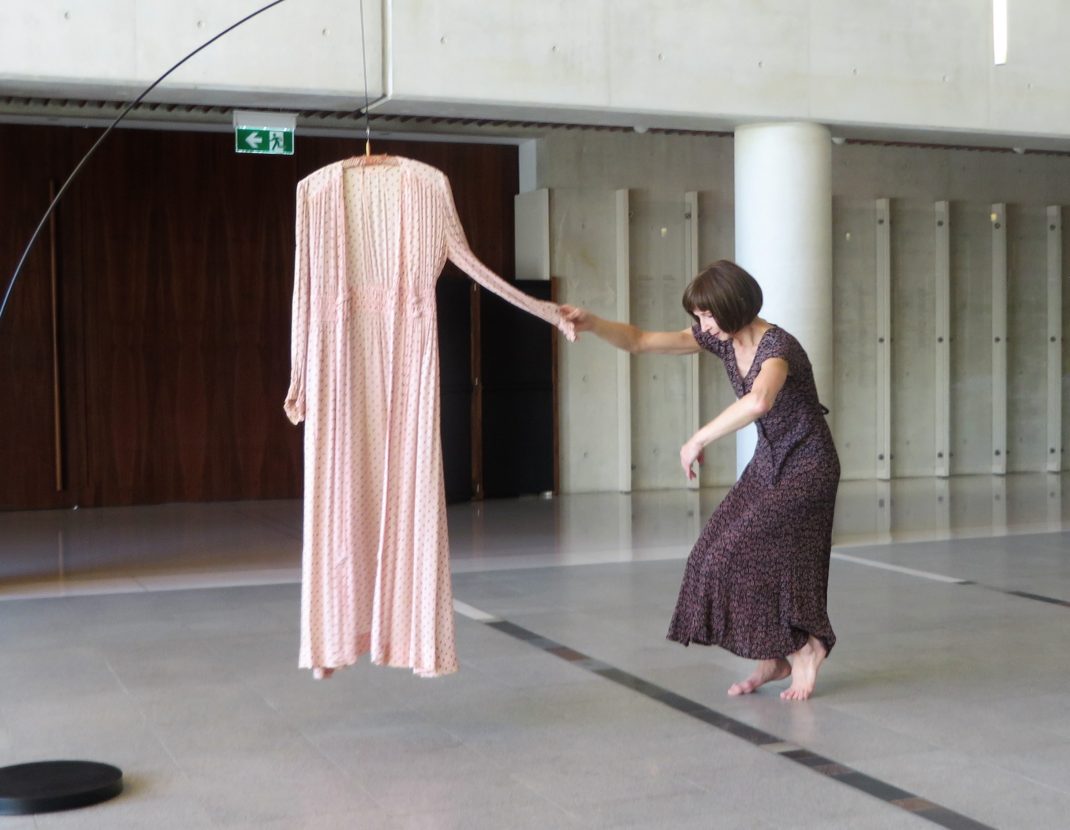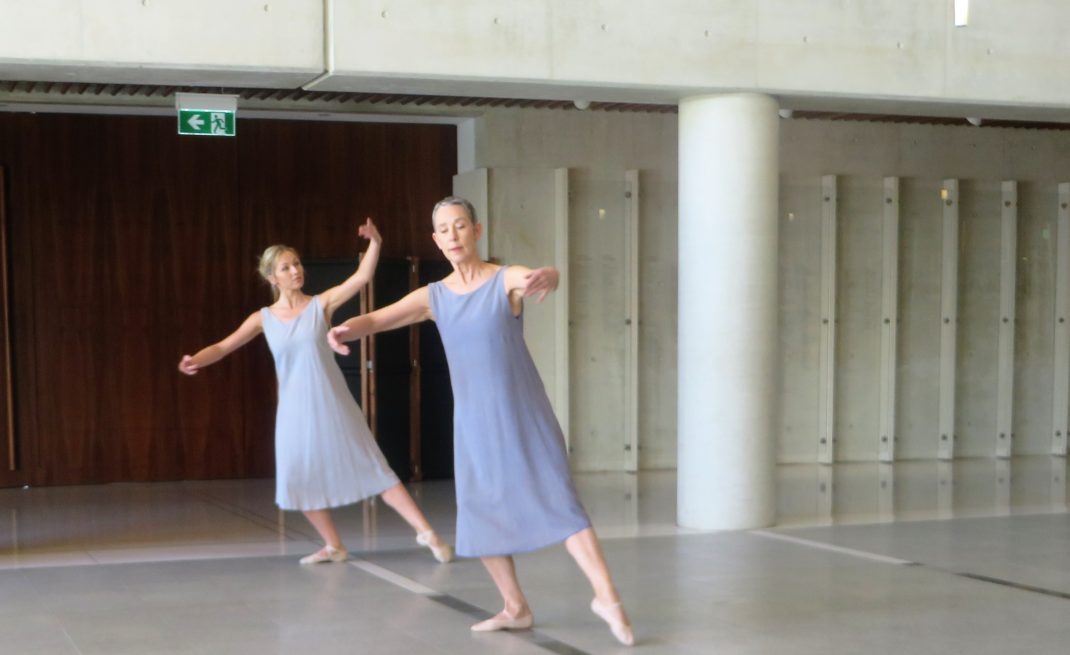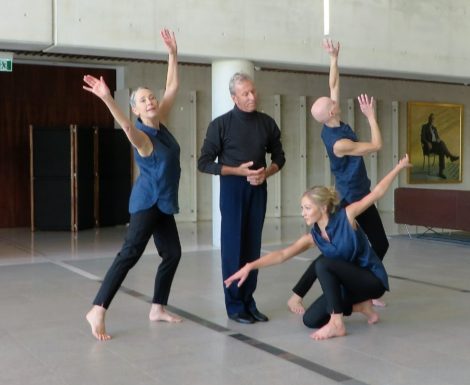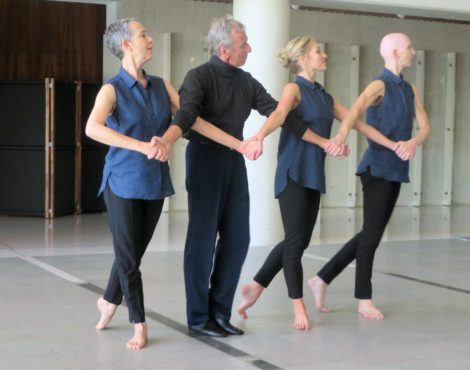28 October 2017, Ken Unsworth Studios, Alexandria (Sydney)
I am a long-term admirer of Ken Unsworth’s sculpture, especially his various suspended stones sculptures. I have often wondered what it would be like to give those stones a push to see what motion would ensue. Well, Restraint(s), a work that should probably be described as performance art, put my mind at ease to a certain extent. Unsworth clearly enjoys making sculpture and installations that move, or can be moved. No doubt the suspended stones would move too, although I don’t think I’ll be trying it out any time soon!
Unsworth has worked with the four dancers of Australian Dance Artists—Susan Barling, Anca Frankenhaeuser, Patrick Harding-Irmer and Ross Philip, and their associate Norman Hall—over several years, most recently using his Alexandria studios as a performing space. Restraint(s) showcased several Unsworth objects that, as the title of the work suggests, put various restraints on the dancers, although the dancers never looked restrained. They simply used each sculpture/installation in an exploratory manner—how can the body move within or around a moving three-dimensional item or items. In the opening section they pushed the very pushable boundaries of a kind of boxing ring made up of stretch ropes. This was, for me anyway, the least interesting of the several sections that made up the evening.
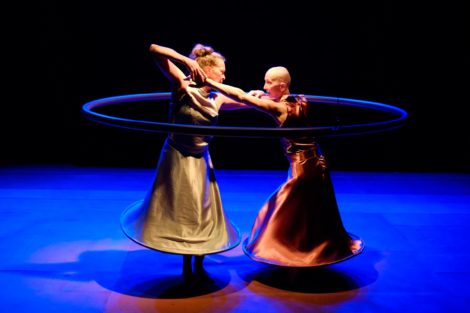
Much more interesting was an early section performed by Susan Barling and Anca Frankenhaeuser in which they engaged with a very large golden ring (a bit like a circus cyr wheel), which changed colour at various times. The wheel was slowly lowered from an exposed part of the ceiling that revealed a machine-for-lowering-and-manipulating-rings-and-other-things. The ring was at times in mid-air, parallel to the floor, but at other times was manipulated from the hole in the ceiling so that it stood on edge, vertical to the floor. Barling and Frankenhaeuser wore simple, long-ish dresses that had a hoop inserted into the circular hemline, thus mirroring Unsworth’s ring. They moved around, alongside, inside and over the ring, depending on how it was positioned. Towards the end they flung their skirts up so that the ring in the hemline framed their faces. A very interesting variation on a cyr wheel performance.
I also enjoyed a surprising section involving two sliding floor boards that moved in opposite directions across the width of the performing space. Initially they simply seemed like regular floor boards but, as Barling and Frankenhaeuser began to pose on them, the boards began to move. The dancers’ poses became varied—sometimes they stood, other times they reclined as they took a ride back and forth across the space. Ross Philip joined them and began to pose with them, over them, and around them. This became an exercise in maintaining one’s balance and keeping within one’s space.
Then towards the end there was a somewhat mysterious section that involved Patrick Harding-Irmer and three white (plaster?), human-sized dummies. Harding-Irmer, dressed in black trunks and black caftan with hood, and carrying a long black stick, danced around the dummies, occasionally moving them to another position in the space, sometimes pushing and balancing them with his stick, and occasionally mirroring their various static poses. This section segued seamlessly into the finale when a large structure, consisting of a circular platform holding four tall glass panels, with a peacock etched on each one, was pushed into the space and connected to that hole in the ceiling. The glass panels divided the structure into quarters and as it spun around, Harding-Irmer was joined by the other three dancers, also dressed in black, and the company dashed in and out of the spinning spaces.
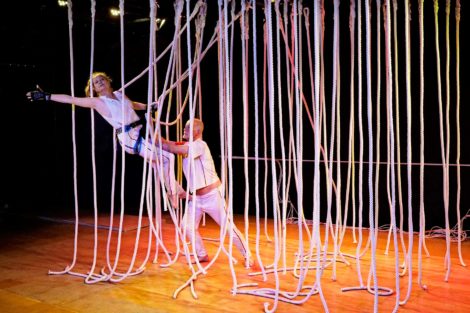
I guess what I really enjoyed about this show was its coherent concept and the versatility with which the concept was presented. I definitely found some sections more interesting to watch than others. The one that had the most inventive and polished movement came from Barling and Philip who worked like aerial artists in a forest of hanging ropes. But every section had been thought through carefully. The use of colour, the costume design, the music (original score by Kate Moore) all focussed on the concept. And there was an innate and refreshing simplicity in how the evening was strung together. Initially I thought it might be a little like the experimental performance art that people like Rauschenberg, Cunningham, Cage (and others) were making in New York in the 1960s and 1970s. And in many respects it was, except that it was not quite so wacky. There was coherence amid the eccentricity. Well done!
Michelle Potter, 30 October 2017

